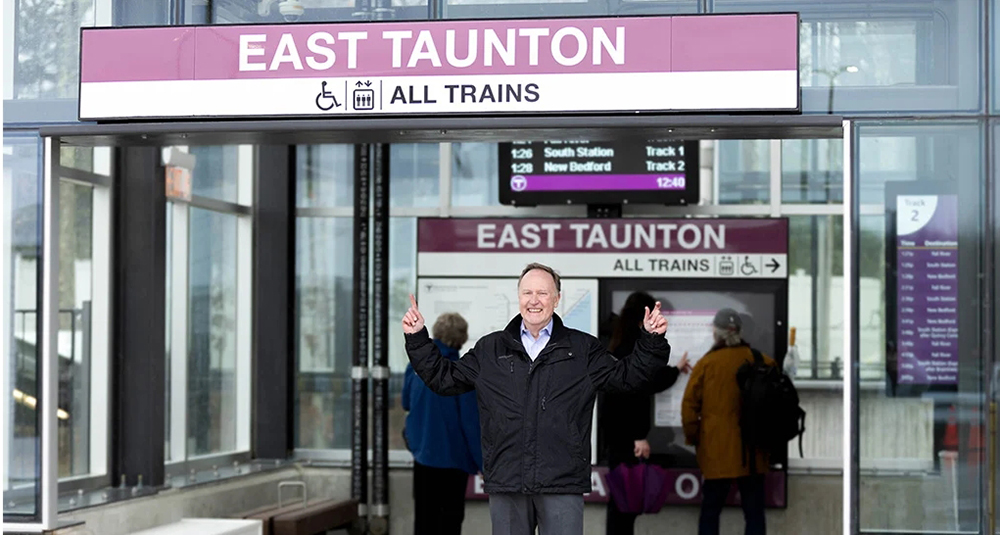News:
Spotlight Content
Posted: March 24, 2010
As spring approaches, there are some bright spots of the horizon, but still concerns about recovery
The spring season is a rebirth. Last spring I hoped the worst of the recession was behind us and the stimulus would help turn around our industry. Well, not all things happen the way we want and we cannot predict the future with certainty.
As a new spring approaches there are some bright spots on the horizon but there are still many concerns about a recovery.
The Boston Globe just did an article on the "10 top spots to live". They listed towns that have retained home values throughout this last recession. Almost all these towns have some common factors: they had a strong sense of community; they are well managed, which attract professionals and families; most have good access to transportation and jobs. The outstanding thing is that these places have seen little decrease in home values sine the price peak in 2005. Most of these are now seeing an increase in median price from that peak. So there are some bright spots on the horizon.
The National Association of Home Builders have published data that suggests the market has hit bottom, at least in the Northeast, and may even be showing signs of improvement. The inventory in the Boston area is lower than it has been in years and some homes are even selling for above asking price. This is not to say it is a seller's market, but if you own real estate you need to sell, it is a better time than in the past year or so. The NAHB feels that we will see almost no increase in home values for 2010, with possibly an increase in 2011. This is another sign of hope for all in the industry.
The impact of this recession has hit almost all of us and is spread across many industries. The commercial and multi-family real estate market has been slower to react during these times, so things there are not too hopeful. Retail stores are continuing to be closed, businesses are still left with vacant or excess office space and rental revenues are down. The rent for space in most office buildings has seen a drop over the last year as leases came up for renewal and tenants cut back on their space, consolidated offices or closed branches. The commercial owners are also dealing with financing issues as many mortgages were written for short periods and are coming up for renewal. The rents do not always justify the mortgage and many lenders are not in a position to renew without additional equity. This is a looming issue and its impact on all of us is unknown at this time.
I did a small survey of our clients to see if they had hope for this year. A few are still too deep in their financing issues to see much good in the immediate future, others are upbeat and looking at new projects, and then others are simply working hard to get through these difficult times. The outlook depends on where they were on their projects when everything came to a halt in 2009. One client has adjusted his prices, updated his products, worked with his lenders, and is seeing results. His inventory is down, he has better traffic and sales at his sites, and is paying down his debt. Things are not all rosy for him, but he sees improvement and feels he will get through this recession. Another had been conservative in the number of projects, never leveraged his properties too heavily and is very upbeat. His feeling is, with no new projects having come into the pipeline in the last year or more, other projects selling down their inventory, and buyers who have been sitting on the sidelines for so long, we are posed for a strong recovery. He has a couple ongoing small projects with strong demand in top communities and is looking for new projects to bring online in 2011. There are still developers who are in trouble and have been barely hanging on. If this market improves for them, they may just make it through, but for many it is still a scary time.
The recovery seems to be happening, although not to strongly or consistently for us here in the Northeast. It is a changed market, which will reward those that can change with it. Buyers are more concerned with quality, lasting value, and good location. They are buying for the product and how it meets their needs and not for the profit they think they will make in a few years. They are looking at quality of life issues. This may translate into a location giving them a shorter commute, better access to stores, a more energy efficient home, smaller yard to take care of, or a different type of housing. The product and community you envision must respond to these goals if you want to attract buyers. You cannot go back to business as usual and expect buyers to come to your project. Remember, it is still a buyer's market and will probably remain that way for the immediate future.
David O'Sullivan, AIA, CAASH, is president of O'Sullivan Architects, Inc., Reading, Mass.
Tags:
Spotlight Content
MORE FROM Spotlight Content
Check out the New England Real Estate Journal's 2025 Fall Preview Spotlight
NEREJ’s Fall Preview is Out Now!
Explore our Fall Preview Spotlight, featuring exclusive Q&As with leading commercial real estate professionals and in-depth byline articles on today’s most relevant market topics. Gain insight into the trends, challenges, and opportunities shaping New England’s commercial real estate landscape this fall.
Explore our Fall Preview Spotlight, featuring exclusive Q&As with leading commercial real estate professionals and in-depth byline articles on today’s most relevant market topics. Gain insight into the trends, challenges, and opportunities shaping New England’s commercial real estate landscape this fall.

Quick Hits
Columns and Thought Leadership

Shallow-bay wins on 495/128: A renewal-driven market with a thin pipeline - by Nate Nickerson
The Boston industrial market entered mid-2025 in a bifurcated state. Large-block vacancy remains elevated, while shallow-bay along the 495/128 corridor continues to prove resilient. Fieldstone’s focus on this geography positions us squarely in the middle of a renewal-driven, supply-constrained

How long should I hold a property for it to qualify as an investment property in connection with a 1031 tax-deferred exchange? - by Brendan Greene and Mark McCue
Internal Revenue Code (IRC) Section 1031 provides “No gain or loss shall be recognized on the exchange of property held for productive use in a trade or business or for investment if such property is exchanged solely for property of like kind which is to be held

30 years on South Coast Rail: A journey to connect Southeastern Mass. with commuter rail - by Rick Carey
On March 24, 2025, a dream more than three decades in the making became a reality with the launch of the Massachusetts Bay Transportation Authority’s (MBTA) South Coast Rail commuter service. This milestone marks the completion of a project that overcame numerous starts and stops, including changes in leadership

How do we manage our businesses in a climate of uncertainty? - by David O'Sullivan
These are uncertain times for the home building industry. We have the threat of tariffs mixed with high interest rates and lenders nervous about the market. Every professional, whether builder, broker, or architect, asks themselves, how do we manage our business in today’s climate? We all strive not just to succeed, but










.png)